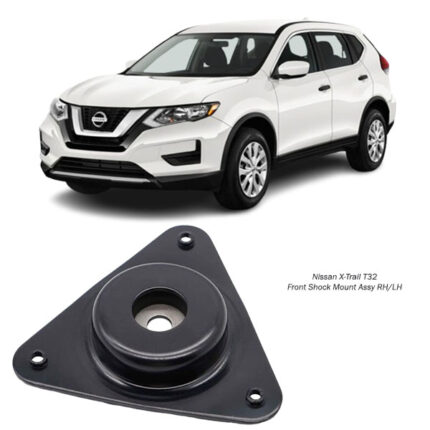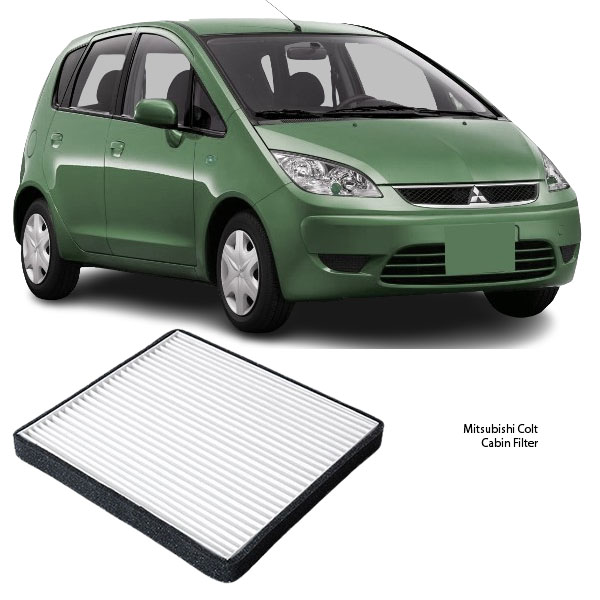-14%
Get Mitsubishi Colt Cabin Air Filter AC303J in Kenya
In the world of machines, performance often takes the spotlight — power, durability, and technology dominate the conversation. But what about comfort? Health? The quality of the environment around the user? That’s where the Cabin Air Filter steps in — a silent champion that directly impacts well-being, focus, and overall experience. 🧘♂️💨
This small but mighty component ensures every breath taken within the cabin is clean, fresh, and allergen-free. Let’s explore its world in detail — what it does, how it works, and why it’s one of the most essential filters out there. 🌟
1. What Is a Cabin Air Filter? 🧼🌬️
The cabin air filter is a filtration system designed to purify the air entering the cabin or interior space through the ventilation, heating, or air conditioning systems.
It’s your personal air shield — blocking:
-
🌫️ Dust
-
🌸 Pollen
-
🦠 Bacteria
-
🧫 Mold spores
-
🐾 Pet dander
-
🌪️ Soot and smoke
-
🦟 Small insects
-
❌ Even unpleasant odors (in advanced versions)
Built using layers of fibrous material — typically paper, cotton, or synthetic mesh — the filter is engineered to trap airborne contaminants, making sure the air you breathe inside stays clean and safe.
2. Why It Matters (More Than You Think) 💡🫁
Breathing is life. The average person takes in over 20,000 breaths a day — many of which happen inside enclosed environments. If those environments are polluted, dirty, or filled with allergens, the effects can be uncomfortable at best — and harmful at worst.
Here’s why this little filter makes a big difference:
✅ Improves air quality
✅ Reduces respiratory issues and allergic reactions
✅ Protects HVAC systems from clogging
✅ Minimizes odors and irritants
✅ Promotes comfort, clarity, and mental focus
Whether it’s city smog, rural dust, or high humidity, the cabin filter stands guard — making sure every breath is as clean as possible. 😌
3. How It Works: Layer by Layer 🧬🛡️
The magic of a cabin air filter lies in its multi-layered structure. Each layer plays a distinct role in catching and neutralizing harmful particles.
🔹 Pre-Filter Layer – Captures larger particles like leaves, insects, and hair.
🔹 Particle Layer – Blocks fine dust, dirt, pollen, and mold spores.
🔹 Activated Carbon Layer (optional) – Absorbs odors, smoke, and gaseous pollutants like nitrogen dioxide.
🔹 Anti-bacterial/Anti-allergen Treatment (in premium types) – Prevents growth of mold or bacteria on the filter media.
Air passes through these layers, and the result? Crisp, clean, breathable bliss. 🌬️✨
4. Common Types of Cabin Filters 🧺🧠
Cabin filters vary depending on their material, structure, and intended purpose. Here are the most popular categories:
🧻 Particulate Filters
These are basic filters made of pleated paper or synthetic fiber. They’re great at capturing dust, pollen, and small debris.
🪨 Carbon-Activated Filters
These include an added layer of activated charcoal that traps gases and unpleasant odors. Ideal for polluted urban areas.
🌡️ Multi-layer HEPA Filters
High-Efficiency Particulate Air (HEPA) filters offer top-tier filtration, capturing even microscopic allergens and bacteria. Often used in high-sensitivity environments.
🦠 Antimicrobial/Allergen Control Filters
These specialized filters are treated to kill bacteria and neutralize allergens on contact, perfect for health-conscious users.
Each type caters to a different need, whether it’s everyday protection, high-pollution zones, or medical-grade air quality. 🎯
5. Where Is It Located? 📦🔧
The cabin air filter is usually hidden behind the dashboard, glove compartment, or under the cowl panel near the windshield base. Its discreet position makes it easy to forget — but also easy to access for inspection or replacement.
Fun fact: Many people don’t realize they even have one until symptoms like unpleasant smells, foggy windows, or reduced airflow start appearing. 😬
6. When to Replace It 🕒🚿
Just like any filter, cabin air filters don’t last forever. Over time, they get clogged with the very things they’re protecting you from.
Here are the signs it’s time for a change:
🚩 Musty or stale smell in the cabin
🚩 Reduced airflow from vents
🚩 Foggy windows that take longer to clear
🚩 More sneezing or allergies indoors
🚩 Visible dirt or discoloration on the filter
In general, replacing the filter every 12,000 – 15,000 km (or roughly once or twice a year depending on the environment) is a safe rule of thumb. In dusty or polluted zones? You’ll want to check even more frequently. 🔍
7. Benefits That Go Beyond Clean Air 🌈🛠️
Yes, cleaner air is the headline — but the benefits of a fresh cabin filter ripple out in many directions:
🧘 Comfort – A fresher, cooler, or warmer interior makes for a more enjoyable experience.
💨 Efficiency – Unclogged filters allow fans and HVAC systems to work without strain.
🦠 Health – Filters reduce allergens and pathogens that can cause irritation or illness.
🌎 Environment – Cleaner systems mean less energy usage and emissions from overworking ventilation units.
💸 Longevity – A clean filter prevents dirt from circulating and damaging sensitive components over time.
It’s a small investment that returns major rewards — daily. 💪💰
8. Choosing the Right Cabin Filter 🔍💡
With multiple types and brands out there, here’s what to consider when selecting the perfect cabin air filter:
✔️ Filter rating (like MERV or HEPA for premium options)
✔️ Presence of activated carbon (for odor or pollution control)
✔️ Anti-bacterial treatment if you’re sensitive or health-conscious
✔️ Fit and compatibility – always match the design to your system’s specs
✔️ Reputation – stick to known brands or verified sellers for quality assurance
You don’t need to be an expert — just someone who values clean, breathable air. 🌿💯
9. Fun Fact: Cabin Air Filters Are for Everyone 🌍👨👩👧👦
You don’t need to be in a smoggy mega-city to benefit. Even rural environments have pollen, dust, and insects. Whether you’re commuting, traveling, or spending time in a closed cabin, having a filter gives peace of mind — especially for:
👶 Babies and children
🤧 Allergy sufferers
🫁 Those with asthma or breathing conditions
🧓 Seniors or those with compromised immune systems
🐶 Pet lovers
Clean air = clear mind, healthy body, and better focus. 💆♀️
10. Final Word: A Breath Worth Investing In 🫶🌬️
The Cabin Air Filter may be one of the most overlooked yet essential parts of your indoor experience. It doesn’t make noise, it doesn’t shine — but it protects your lungs, your health, and your comfort every single second.
In a world full of invisible pollutants, having a clean cabin filter means taking control of your air, your wellness, and your peace of mind.
So the next time you sit back, inhale deeply, and feel that cool, fresh breeze — remember: there’s a hero behind it, doing its job silently, but powerfully.
Follow us on Facebook for more parts.




Reviews
Clear filtersThere are no reviews yet.